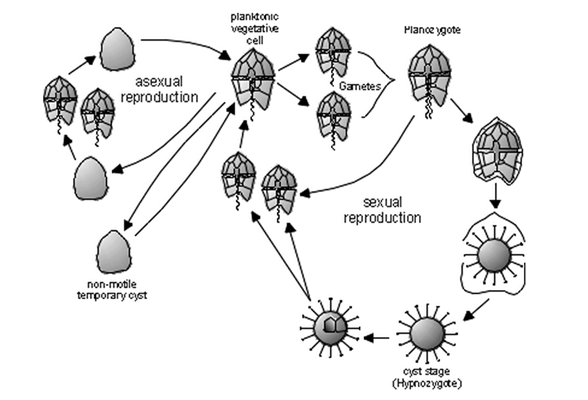Reproduction
This poisonous organism can reproduce asexually or sexually. Alexandrium tamarense reproduces asexually by binary fission. It also can undergo a sexual reproductive cycle “with anisogamous mating types. The gametes join laterally for sexual fusion, produce a planozygote which then encysts into a characteristic resting cyst” (Loeblich and Loeblich 1975). Certain organisms are capable of this resting cyst stage. This stage of Alexandrium tamarense is further discussed in the adaptations section.

Monterey Bay Aquarium Research Institute: Allison Arnold and
Monica Draghici
What basically happens in sexual reproduction is that Alexandrium tamarense blooms when water conditions are optimum. When they bloom they begin to germinate and release swimming cells. These swimming cells then undergo multiple cell divisions to eventually form gametes. Two gametes will then fuse together to form a zygote and this zygote will then continue grow until it becomes a mature organism. This organism is then free to undergo normal functions.
Next Stop: Interactions!